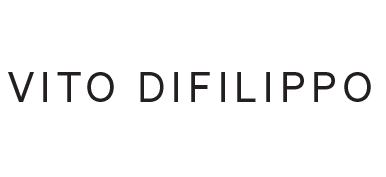Critique
2024. XIAOWEI ZHAO / CURATOR AND COORDINATOR OF ARTISTIC AND CULTURAL PROJECTS – HANGZHOU, CHINA
“Bacteria: Microscopic Life” Vito Difilippo’s Bacteria series takes us on an extraordinary visual journey where abstraction intertwines with the essence of bacteria and the microscopic world. Each piece gradually takes shape through a patient and meditative creative process, drop by drop, like a slowly yet inexorably growing organism that echoes the essence of life itself. Difilippo’s artistic approach reflects a universal sensitivity: the ability to explore the unseen world and reveal its hidden beauty. His color palette, filled with organic and dynamic tones, establishes an intimate dialogue with the viewer, inspiring reflections on the profound connection between humanity and the environment. The abstract forms that emerge tell stories of transformation, growth, and interdependence. The uniqueness of this series lies in its ability to make the invisible visible. Difilippo invites viewers to contemplate the complexity of life and the constant evolution of nature. Bacteria thus becomes a lens through which we can observe the microscopic world that sustains the balance of our existence. This series also connects with universal artistic imagery, resonating with contemporary Chinese art. Difilippo’s meditative and meticulous creative process evokes the patience and introspection of Chinese ink painting masters, renowned for capturing the essence of emptiness and fullness. His organic and vibrant tones align with the visual language of Chinese artists who use color to explore the cycles of life and transformation. Ultimately, Bacteria is a manifesto on the importance of details and the interconnectedness of all things. Difilippo invites us to reflect on how every drop, every hue, and every form contributes to a greater whole—a microscopic world that contains the universe. This is not merely an artistic exploration but a profound existential journey into the purest essence of life itself.
2024. ZHANG XIANHUA / ART CRITIC, FOUNDER & CEO PI GALLERY – HANGZHOU, CHINA
Italian artist Vito not only comprehends and expresses color through an intimate connection with nature, but he also transforms the colors of his inner spiritual world into works of art. In the world of colors, he freely traverses between nature and spirit; This is a visual symphony where the melodies of color harmonies and streams of consciousness intertwine. Why is he able to express himself so freely and effortlessly? Why can he so easily achieve the profound choice of spiritual freedom? I believe that if a person cannot respect their inner experiences and express them freely, there will be no true realism. Vito’s color narrative embodies the diversity of art, and for him, it is a way to practice spiritual freedom. It also shows us his world of colors, illustrating how to balance the relationship between reality and spirit, answering why such art is still needed today.
2024. JUN ZHAO / DIRECTOR OF THE OIL PAINTING DEPARTMENT OF THE CHINA ACADEMY OF ART – HANGZHOU, CHINA
“Traces of Consciousness” Contemporary painting, after undergoing the deconstruction and baptism of postmodern consciousness, finds itself facing a major crisis, much of which is due to the inherently sinful modes of consciousness within different races. After nearly a century of refinement through the model of capitalist operations, art production is approaching the essence of art itself. Approaching the intrinsic sinful consciousness of man becomes the most important method, and such an approach is in itself a form of subversion, a process of restitution and reconstruction that becomes the fundamental logic of the evolution of contemporary art. Even Vito cannot escape this; his works possess a strong force of deconstruction and reconstruction. I vividly remember our first encounter with Vito. Due to time and linguistic communication limitations, what was supposed to be a brief fifteen-minute meeting turned into a conversation of almost two hours. The reason was simple: we didn’t need words; we could communicate effortlessly through the artworks. Vito is an exceptional designer, but his true passion is hand painting. During our conversation, it was evident that for him, design came after painting, as he desperately sought to capture the traces of his spirit and life through the art of painting. His works are divided into several series, which can essentially be classified by a viewer. The first series revolves around dots and circles, forming a decorative style with various color schemes. The second series comprises works with watercolor effects, presenting shades reminiscent of Chinese ink and being extremely engaging. The third series is more experimental and indefinable, but through unrestricted experiments in form, it contains exactly what Vito seeks: a trace of formless and unconscious consciousness. This type of trace pushes back all forms and styles, becoming a sort of non-pictorial form of contemporary painting. I think this is what Vito hopes painting can communicate: something that cannot be expressed in words, touching the essence of a condition that even the individual cannot overcome, and this is what is sought after the crisis of contemporary painting.
2020. ROSI RANIERI / ART CRITIC – ITALY
VITO DIFILIPPO. A dense pictorial surface, capable of revealing <<something else>> through its expressive strength. The brushstrokes are thick, sharp, decisive. Even the background acquires character and volume within the composition, and the tones have a great impact on the surface, carrying us beyond the visible. A highly conceptual stylistic research that flies through reality, passes through it, and then arrives at seeing from cracks, as the artist himself suggests, beyond the common way of perceiving. The horizon becomes more infinite after color; one sees beyond.
2020. DANIELE RANDINI TEDESCHI, STEFANIA PIERALICE / DEAGOSTINI, ATLANTE DELL’ARTE CONTEMPORANEA – ITALY
Vito Difilippo was born in 1988 in Monopoli; he currently lives and works in Santeramo in Colle. The journey of this Apulian artist is characterized by research, passion, and experimentation that began in his teenage years. Far from academicism and strongly influenced by self-taught training, he has ventured into Pop-Art, Conceptual Art, Art Brut, and eventually Informal Art. Analyzing Difilippo’s work, we observe the significant influence of artistic currents that, from the 1950s onwards, shifted the narrative axis from external to internal human experiences. Based on this, the centuries-old figurative tradition, already in crisis in the early 20th century before the return to order, is perceived as apathetic. The viewer’s engagement with the artwork changes from passive to active. To achieve this, there is a need to subtract the objective data from its original context, to later reposition it on an intelligible decontextualized plane, filtered through one’s own unconsciousness. As a result, the relationship between sign and color gradually leans towards the latter as the epiphany of feeling, and the form, now felt as redundant, dissolves. The initial iconic investigation carried out by Difilippo is thus disconnected from the desire for mimetic reproduction of reality, while it becomes a necessary starting point to delve into the hidden depths of one’s own self. The structural synthesis unfolded on the canvas is a clear manifestation of profound attention to a visual semantics in which the concept is the real protagonist of his works. The works of this phase strike the viewer for their symbolic charge and bitter irony, overshadowing the internal compositional architecture of the painting. The reduction of signs is a tool through which the artist wants to convey a universal message transcending particularism and distinctive detail. The aim is not to reproduce the current panorama as it is seen, but to delve into everyday life and existence, focusing on priority themes for the safeguarding of humanity. Difilippo’s canvases are permeated by a provocative conceptualism that aims to strike the sensitivity of the viewer. This is combined with a formal simplification in which the bold stroke traverses the surface with awareness and attracts the eye with gentle curves. The journey of the Apulian artist explores the different superstructural levels of reality, reflecting in particular on social issues and the decay of contemporary society. This is a slow and deliberate descent into one’s own sentient intimacy, aiming to understand the true meaning of the world. The empathy achieved with the emotional flow underlying contingent immanence allows an overwhelming chromatic profusion surpassing any descriptive and figurative need. Difilippo loses all interest in outlining and circumscribing profiles, focusing instead on pure energy as the soul and essence of things. Thus, his painting evolves in a lyrical direction of spiritual ascent where the intrinsic ontology gives rise to higher dimensions, far from objective tangency, expressed through a leading chromaticity. Color, no longer confined within containment boundaries, spreads across the two-dimensional support with renewed representational strength. In the latest works of clear informal matrix, we notice a dual attitude oscillating between tones that cross the surface as traces of a shared emotional experience, and others where compositional silence reaches a living, energetic, and never burdensome solemnity. In the series “A Gaze towards the Beyond,” a sparse use of the palette creates an almost absolute temporal suspension, occasionally interrupted by a peremptory sign/ geometric impulse standing out against monochrome surfaces. Warm fills, reminiscent of the sun and the light of the artist’s native land, spread compactly throughout the extent of the pictorial scene, leaving solitary but decisive elements of contrast charged with poetic vis. The spatial resetting achieved abolishes any external reference point, thus creating a solipsistic relationship with the observer’s sensibility. In other works, such as “VD-3,” the no longer homogeneous layering and the interpenetration of nuances of similar tones create a delicate informal that relocates the viewer into a totalizing abstraction, projecting them directly into the artist’s soul.
2017. TERESA STACCA / ART CRITIC – ITALY
Natural, anarchic, transgressive and puritan. . . The couple as an entity of union, inspires/moves and gives emotions, encourages both unions and clashes in that vortex of energy in which diversity is vital.

